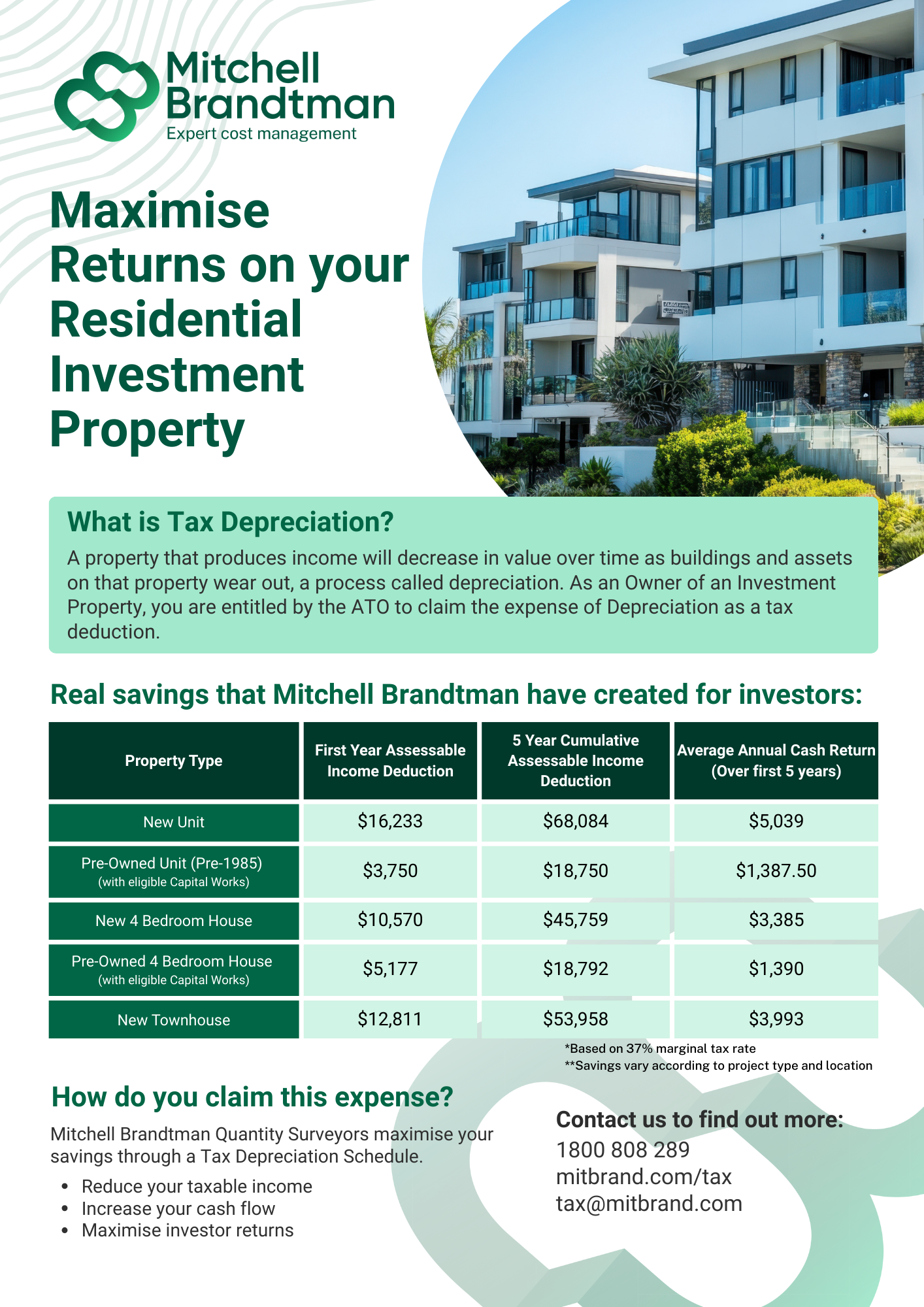




Participation in our Melbourne Cup 2025 Sweeps is by invitation only!
As a thank you for your continued support and business, we extend to you our sweeps for a chance to win a gift voucher!
Best of luck to all who enter!
Please check your email inbox for details and terms and conditions for entering the sweeps.

As construction projects become more complex and financial structures more layered, understanding the role and value of a Quantity Surveyor has become so important. While most in the industry know that a QS provides cost advice and oversight, it is in a project’s benefit for all to realise the very different responsibilities of a Financier’s QS, Developer’s QS, and Superintendent’s QS.
According to Tass Assarapin, Partner at Mitchell Brandtman and head of Mitchell Brandtman’s Sydney CBD office, these roles are often confused and sometimes blurred, but the distinction between them is critical.
“They’re technically three completely different roles. The Financier’s QS acts as a representative for the Financier, the Developer’s QS works on behalf of the Developer, and the Superintendent’s QS sits right in between, administering the contract independent of both sides.”
The Financier’s QS: The Eyes and Ears of the Lender
A Financier’s QS reports to the Financier, even though the Developer is usually the one paying their fee. Their brief is narrower, but no less important. A Financier will look to their QS to confirm the cost to complete, review the project funding table and assess if the program is achievable. They also review and comment on authority approvals and insurances, while providing independent reporting on progress and other potential risks.
“The Financier’s QS is accountable to the Financier,” Tass notes. “Their brief is specific, and they’re essentially the Financier’s eyes and ears on site.” It is a reporting-heavy role where independence is non-negotiable.
The Developer’s QS: Seeing it from the Developer’s Position
A Developer’s QS is engaged directly by the Developer, and their role is to work in the Developer’s best interests. This often begins with feasibility studies and cost planning and extends through to assessing progress claims and contract variations. The Developer’s QS is, in many ways, the Developer’s advocate, ensuring the project budgets are achievable and therefore keeping the budget viable.
“It’s basically a QS that’s there to assist the Developer in achieving the best outcome,” Tass explains.
The Superintendent’s QS: Independent Contract Administrator
Unlike the other two roles, the Superintendent’s QS is bound by the contract itself. They are not working for the Developer, the Financier, or the builder, but are instead there to oversee the contract independently in liaison with a project Superintendent.
A key responsibility is the assessment of variations, which, when handled correctly, can save a project significant cost and reduce disputes.
“With that independence, we see a great value in a QS assessing and determining the quantum of variations, as there could be millions of dollars saved just in the assessment of contract variations alone.”

Why Independence Matters
Tass cautions against attempts to combine roles, such as appointing the same QS as both the Financier’s QS and the Superintendent’s QS. In his view, this creates unnecessary conflict because the priorities of a Financier and the obligations of a Contract do not always match.
“We would strongly recommend keeping the Superintendent’s QS role completely independent from the role of the Financier’s QS,” he says. “The stipulations of a Contract can sometimes juxtapose with a Financier’s brief, particularly regarding things like cost to complete or unfixed materials.”
For example, Contracts may allow deposits and payments unfixed materials, but Financiers typically avoid this unless supported by unconditional Bank Guarantees. Contracts may permit milestone or cost-to-date payments, while Financiers usually require payments strictly aligned to cost-to-complete. These differences can quickly create friction, highlighting why independence between roles is essential to maintain trust and protect all parties.
Industry Observations and Insights
Across the industry, several observations are reshaping the QS landscape. “The briefs are getting bigger and bigger, and the Financiers are asking for additional reporting,” notes Tass, describing how lender requirements are pushing the Financier QS role toward quasi-project-management territory.
At the same time, he warns that “we’re seeing the Superintendent’s QS role decrease,” a trend that can be costly given the financial impact when independent oversight of contract variations is reduced.
Finally, Tass cautions Developers not to treat Financier’s QS reports as if they were their own: “Those reports are for the lender, the disclaimers make that very clear.” To protect their interests, Developers should always engage their own QS rather than relying on reports commissioned by Financiers.
The differences between a Developer’s QS, Financier’s QS, and Superintendent’s QS may seem subtle, but in practice, they can determine the success of a project. “The roles are kind of similar,” Tass reflects, “but it all comes down to who we’re working for.” For Developers, Financiers and builders, understanding these distinctions and ensuring independence where it matters helps create certainty and deliver better project outcomes, and Tass and his team at Mitchell Brandtman prove their expertise in these fields to get the job done.

Over the past three to four years, the landscape of property development has been fundamentally reshaped. What used to be a relatively predictable process—site acquisition, design, funding, pre-sales, construction, delivery—now feels more like navigating a shifting puzzle where each piece moves against the other.
For developers, financiers, builders, architects, and consultants alike, the real question today isn’t, “How do we deliver this project?” but rather, “Does this project even stack up in the first place?”
Why is this so?
We have a few considerations here:
Increased Cost of Money: Development finance is no longer cheap. Higher interest rates and tighter lending conditions put pressures on feasibility models.
A Noticeable Reduction in Off-The-Plan Sales: Buyers are more cautious, driven by fears around reliability of delivery, construction defects, and an increasingly prominent “buyer beware” sentiment.
Market Trust: Well-publicised builder collapses and defect scandals have created an air of caution that directly affects pre-sales momentum.
The result is an environment where feasibility is under greater scrutiny than ever before. Deciding how best to use a site; whether it’s multi-unit residential, re-zoning from industrial to residential, renovating an existing home, or committing to an entirely new build, has become a far more complex process.
So, how have recent interest rate changes shaped the way clients approach projects and make decisions in property and construction today?
Looking back a few years helps us understand today’s climate:
2021 to early 2022 – Record Lows: Interest rates sat at emergency levels, allowing developers to borrow at historic lows. This drove acquisitions, approvals, and strong off-the-plan sales.
Mid 2022 to 2023 – Rapid Rises: RBA lifted rates aggressively. In Australia, the cash rate rose from 0.10% in April 2022 to 4.35% by late 2023. Lending became harder, holding costs increased, and pre-sale requirements tightened.
2024 to today (Q3 2025) – Higher for Longer: Rates have stayed elevated, though recent small reductions have sparked activity and lifted confidence, both for development finance and end-user borrowing.
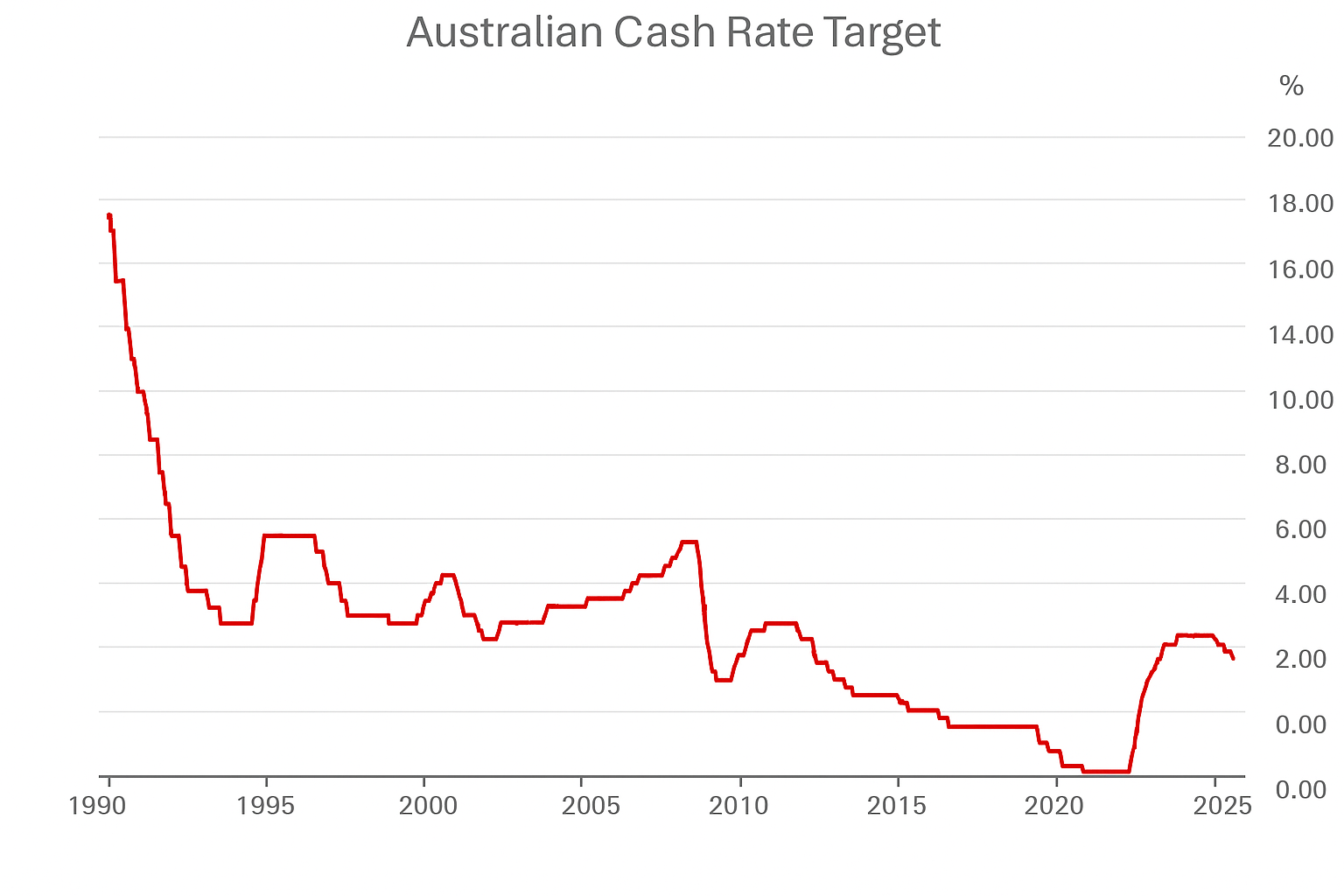
Even though rates have started to come down, borrowing is still far more expensive than what we have experienced previously. Lenders are cautious and expect developers to contribute more upfront, whether that’s funding site costs until early construction milestones are met, paying consultants and council fees in advance, or showing a stronger equity position overall, ensuring projects have a solid financial base before finance is released.
This shift in financing expectations has led to more project delays and, in some cases, cancellations.
Projects are now taking much longer at every stage. From planning and approvals to the detailed design phase and the lengthy tendering process. As a result, many projects have been put on hold while developers weigh up the best use of the site and the most workable funding structure. Where that isn’t possible, sites are being on-sold or abandoned.
ABS data shows that while dwelling approvals rose 11.9% to 17,076 in June 2025, which is the highest level since August 2022, dwelling commencements were down 11.8% since mid-2023, validating a growing approvals-to-starts gap [Source: ABS].
This shift has contributed to more project delays and cancellations. Projects have spent significantly longer in the planning and approvals phase (we’re seeing this well documented in the media) then, even longer in the Design/Construction Certificate stage, with rigorous design requirements to satisfy before a Construction Certificate is issued. At the same time, designs are refined to meet construction budgets, and the builder tendering process now stretches from initial tender through addendums, refinement and finally contract execution. This has created a significant number of projects ‘parked up’ or on hold while teams determine the best use of the site and the funding arrangement that allows a profitable start. If this cannot be achieved, sites are on‑sold or scrapped altogether. Over the past 2–3 years this scenario has risen markedly, well beyond anything I have seen in my 25 years in the industry.
In response to higher borrowing costs, both funding structures and development strategies have evolved.
We’re seeing several key shifts in how projects are funded and delivered:
Greater Equity Requirements: Banks want developers to commit more upfront equity to reduce their risk.
Pre-Sales and Buyer Confidence: With buyers cautious, larger developers are modelling ‘build to rent’ or ‘build to hold’ models to offset the need for pre-sales and tap into long-term financing. Smaller developers, who in a rising market, benefit from holding product back, continue to shop around for financiers who are prepared to take lower pre-sales.
Alternative Finance Options: Non-bank lenders and private capital are stepping in, often with higher interest but more flexible terms. Bridging finance and mezzanine debt are also becoming more common.
Joint Ventures / Capital Partnering: Developers are partnering with institutional or private investors to spread risk and attract senior debt.
Staged or Phased Delivery: Breaking projects into smaller stages reduces upfront costs and allows funding to match sales progress.
Value Engineering & Cost Certainty: Lenders now scrutinise Quantity Surveyors reports more closely than ever. Detailed cost planning and contingencies are essential for finance approval.
Focus on Product-Market Fit: Finance is only flowing to projects that clearly meet buyer demands in location, design and price.
Looking ahead, the indicators I’m watching closely over the next 12–18 months will shape how projects are planned and financed.
Several factors will influence the market in the coming year and a half:
The combined effect of higher borrowing costs, slower approvals, and rising build costs means that sites that looked viable a few years ago may no longer stack up under today’s conditions.
So, what does this mean for developers and homeowners planning projects in the current climate?
From a cost planning perspective, the challenge has shifted from simply “pricing a build” to “stress-testing” the project under real market conditions. Developers and financiers now rely on QS services not just to benchmark costs, but to provide insights on viability, funding confidence, and risk.
We, at Mitchell Brandtman, update cost plans through every stage, including council estimates, DA stage, approval, design documentation, tender reviews and cost-saving recommendations. Our database and knowledge of past experiences, past projects and real-world successes (and failures) all add to advice we can offer Developers and Financiers to ensure that projects are delivered on budget, on time and as specified.
The Key Questions Every Project Team Should Ask
Looking Back and Looking Ahead
As I reflect on my 25 years in the industry, I want to thank our many clients – Developers, Builders, Architects, Engineers, Financiers and so many others – I’ve had the privilege of working with.
From our humble beginnings, we have grown into one of Australia’s leading Quantity Surveying practices, it has been an incredible journey.
At Mitchell Brandtman, we remain committed to providing expert cost management advice and sharing our knowledge with a service offering I am proud to say, is truly market leading in the Quantity Surveying field.


This Mitchell Brandtman Quarterly Construction Cost Update
has been put together to help keep you informed on the
movements of the market to better position yourself for your
current and future projects.
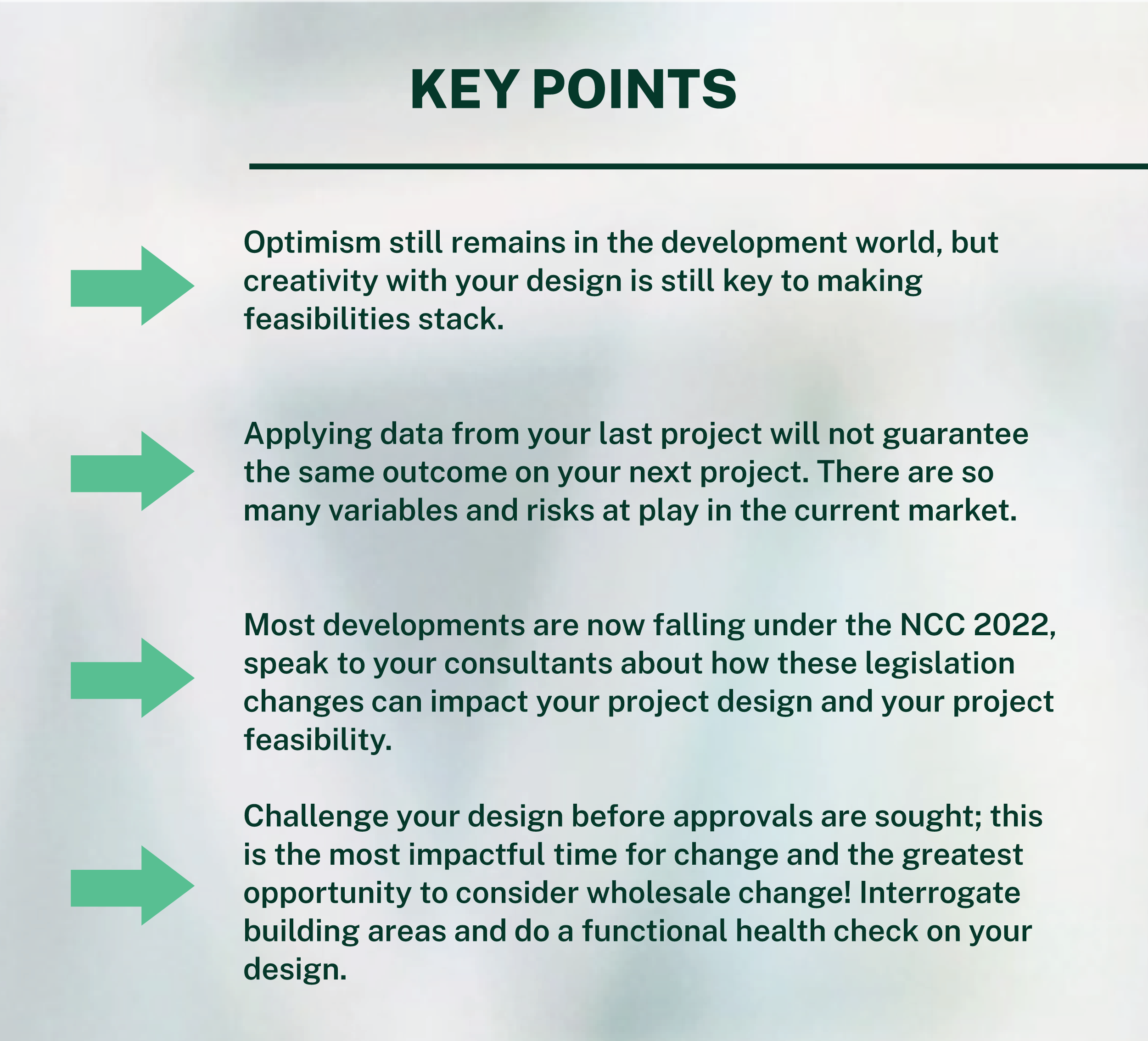
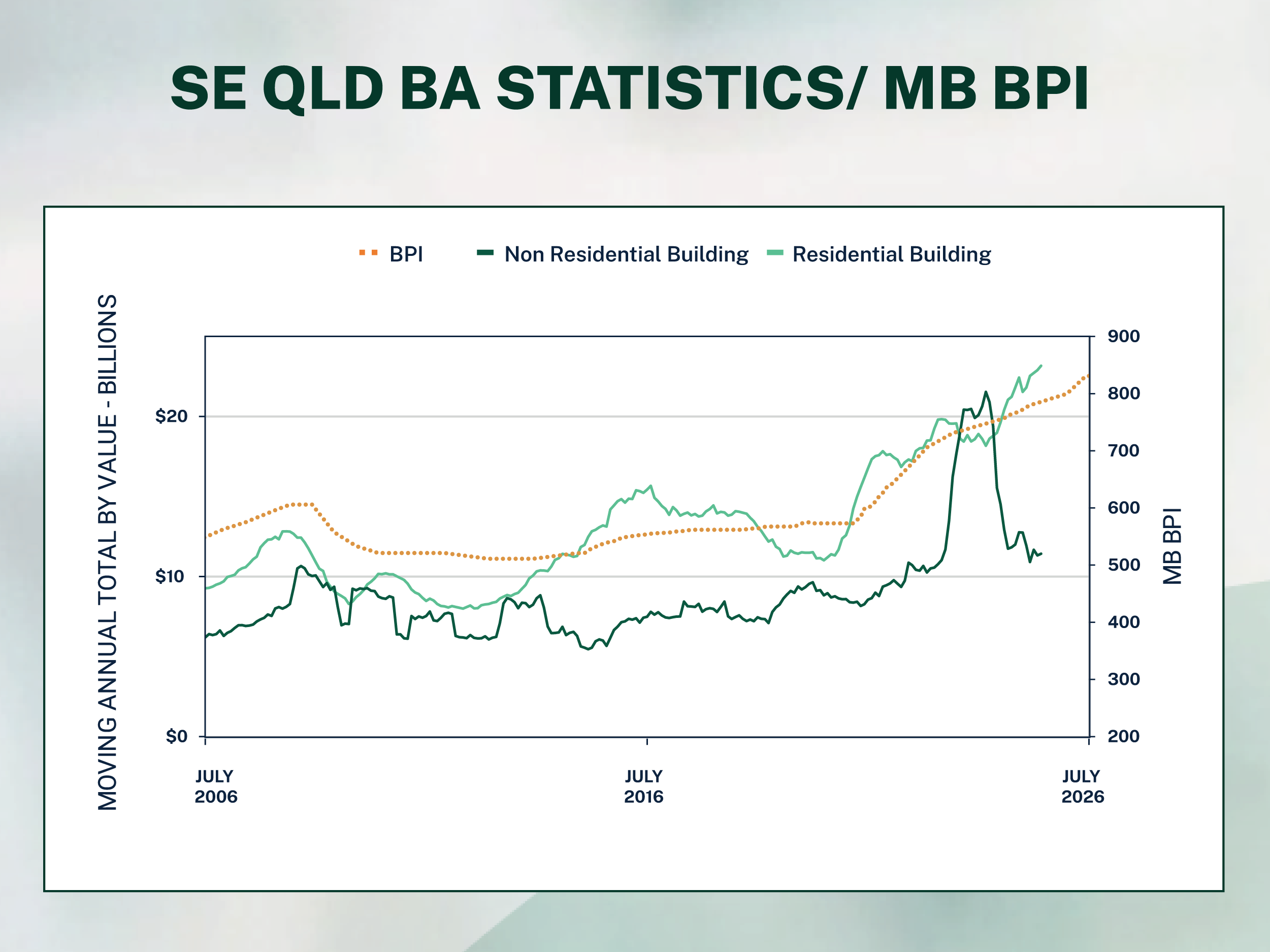


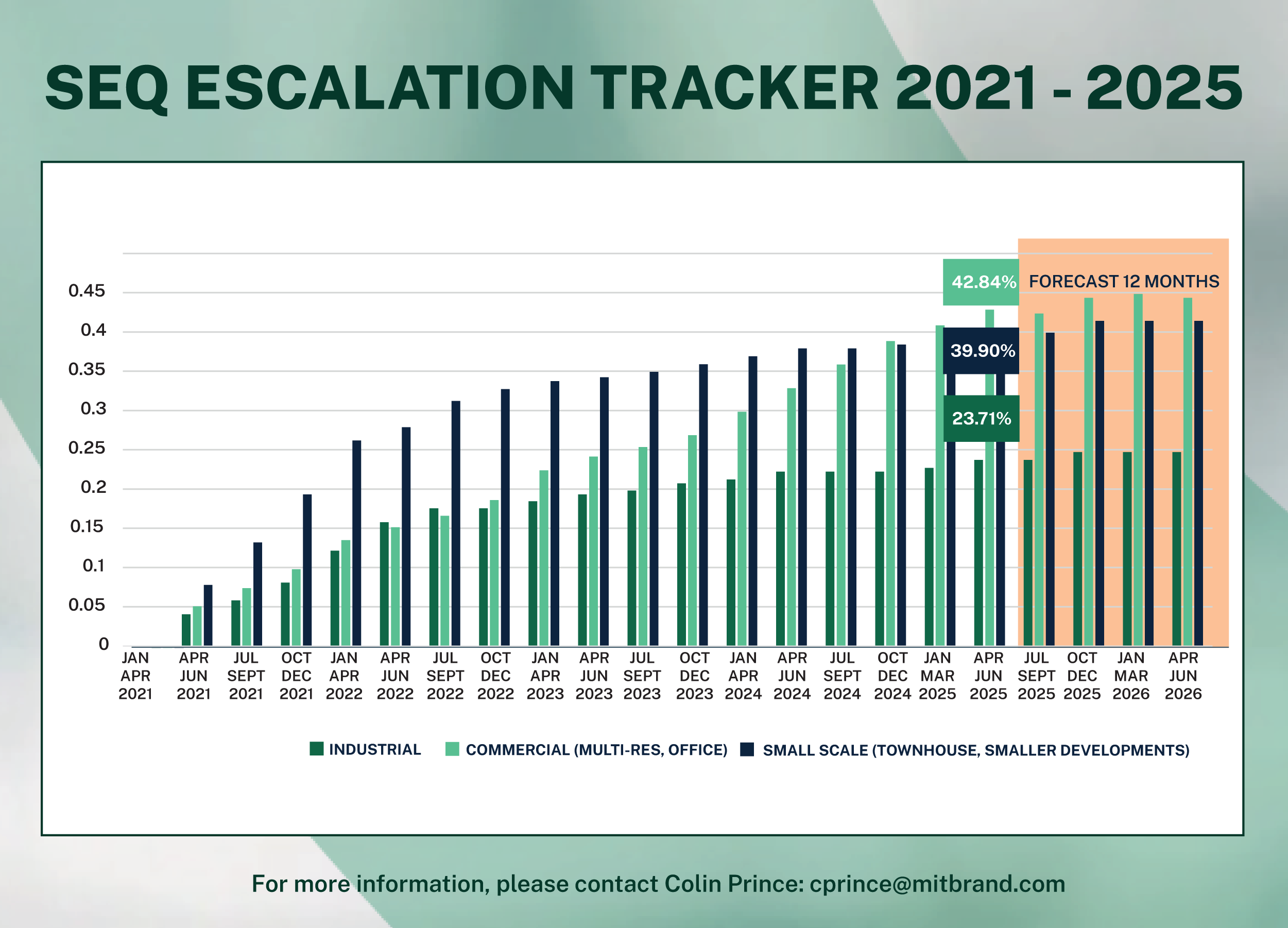
For NSW Quarterly Cost Update click here
For VIC Quarterly Cost Update click here


This Mitchell Brandtman Quarterly Construction Cost Update
has been put together to help keep you informed on the
movements of the market to better position yourself for your
current and future projects.
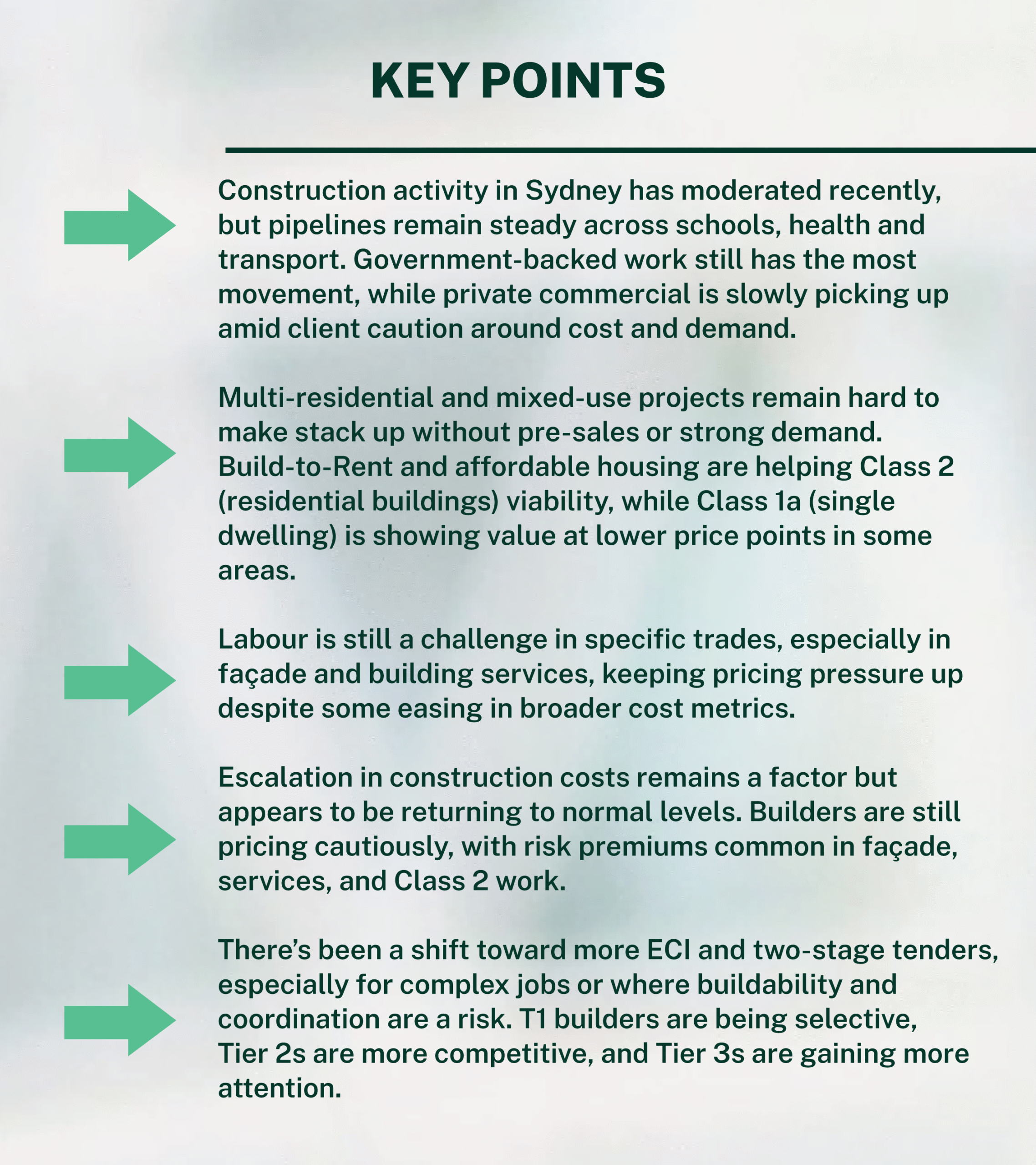


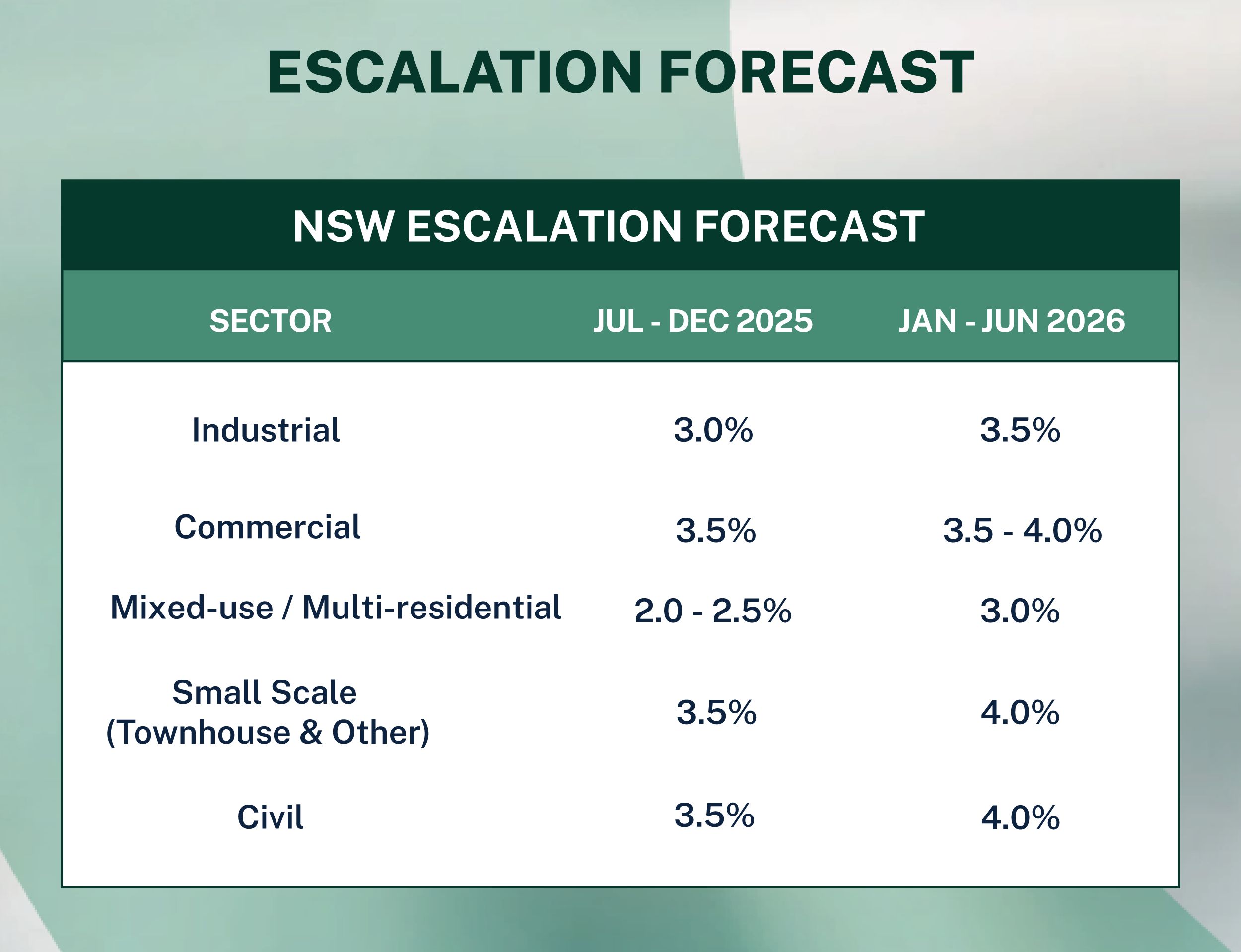
For QLD Quarterly Cost Update click here
For VIC Quarterly Cost Update click here


This Mitchell Brandtman Quarterly Construction Cost Update
has been put together to help keep you informed on the
movements of the market to better position yourself for your
current and future projects.
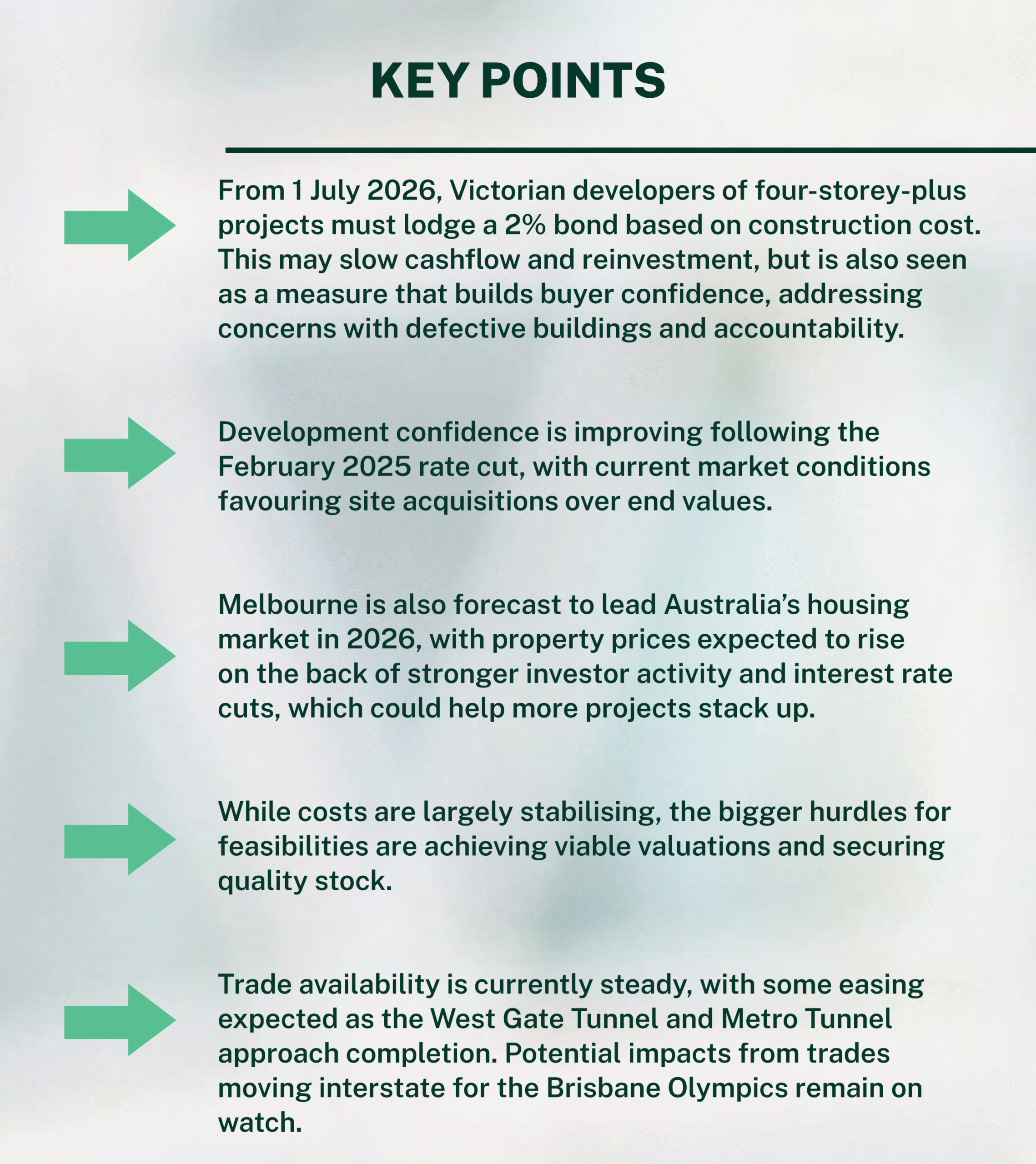
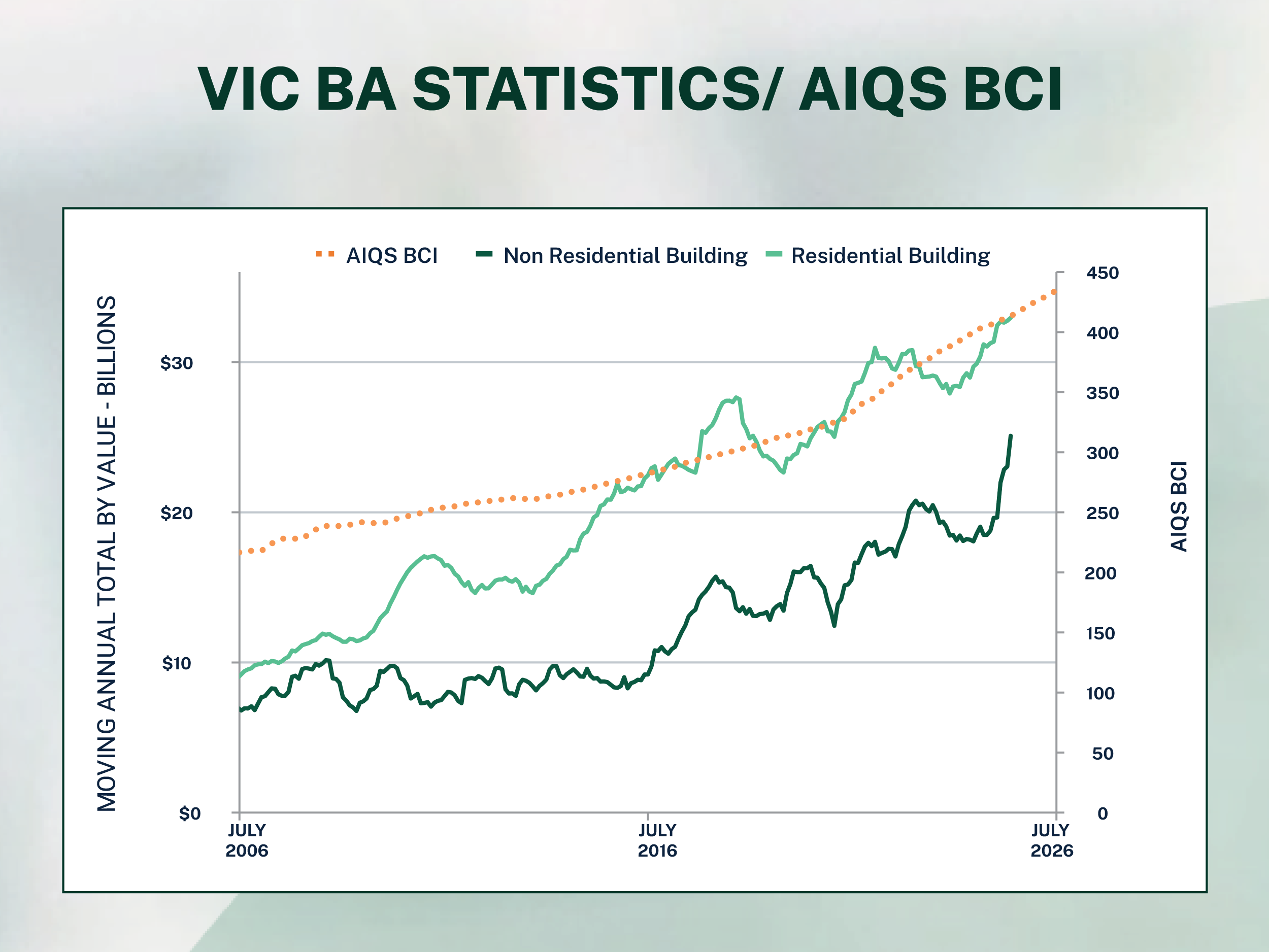


For NSW Quarterly Cost Update click here
For QLD Quarterly Cost Update click here

When accuracy and speed define the success of a construction project, Building Information Modelling (BIM) and 5D Cost Planning should be more than just words that get thrown around. They’re essential tools for experts to develop a smarter, more integrated way of working. As Caitlin Shields, Queensland Partner at Mitchell Brandtman and expert in 5D and BIM, puts it, “The original intent of BIM was a methodology or ideology about how teams should work. It’s not just a physical thing; it’s a way of thinking.” At its core, BIM is a collaborative process underpinned by digital technologies. It allows stakeholders to develop a coordinated digital representation of a project, incorporating data across all disciplines.
It starts with what’s available, as Caitlin explains. A 3D model (or model) is provided, and Quantity Surveyors utilise this information to introduce the 5D aspect: cost. “The model is one part. The real value is in the information, it’s about how well that information is structured and shared.” Caitlin says. It’s about using all components of a project and how that information is structured, analysed, and ultimately used to make better decisions. Quantity Surveyors use this data not to author, but to consume, organise and analyse.
In traditional workflows, Quantity Surveyors spend the majority of their time measuring from 2D documents. BIM flips that paradigm. “The models give us quantities rapidly, so we spend less time counting and more time asking the critical questions about why things cost what they do.”
The result is a deeper cost analysis that is provided within an expedited timeframe. Teams can run iterations, refine estimates multiple times (not just at traditional milestone points), and deliver insights in real-time to keep pace with evolving project needs. “The magic of 5D is when we can link the cost data directly from the model outputs so when the design changes, the cost changes with it.” Caitlin explains.
The Utilisation of BIM
Despite its clear benefits, BIM and 5D adoption remains patchy across the industry. Why? The answer is simple. It is not mandated. “I’m an advocate for governments to make it mandatory and make people do it right.” Caitlin says. Owners and developers often don’t ask for BIM because they don’t fully understand its value. Many projects are delivered and immediately sold off meaning the long-term benefits of embedded digital information are lost on those footing the bill.

Barriers to BIM adoption in Australia: derived from Sompolgrunk et al. (2023)
Without incentive or pressure from clients, many project teams stick to old methods. Even subcontractors and trades are often disengaged from the BIM process. “You’ve still got a whole industry that’s full of tradies in utes with invoices in their glove box. They’re not thinking about digital models and most importantly that transfer of knowledge if project information.” But Caitlin argues the tide is turning. Those who are engaging with BIM, are beginning to see just how much it can transform project delivery. BIM enables everyone, from architects and engineers to trades and financiers, to be on the same page. And for projects that get it right, the outcomes speak volumes.
A ‘Sunny’ Example
Mitchell Brandtman’s involvement in the $1.8B Sunshine Coast Public University Hospital project is an example of BIM and 5D at its best. “That was a gem of a project and a game changer in our methodologies” Caitlin recalls. “We were not involved from the beginning, but when we arrived, we were able to give rapid and Repetitive feedback on quantities and model information which influenced the way software providers structured their outputs. The result was a seamless process from design to delivery by providing virtual trade packages, digital coordination, and collaboration.

The project didn’t just benefit from efficiencies the team provided, but it also helped shape industry standards. It’s proof that when Quantity Surveyors are engaged early and enabled to work in 5D, everyone wins.
Who Benefits and Who’s Using It
The answer to who benefits is everyone. But the biggest gains are for asset owners, operators, and those managing portfolios over time. Caitlin is especially passionate about where BIM is gaining traction now. Major players across public and private sectors are beginning to understand the long-term operational gains of having a ‘digital twin’. A digital twin is valuable for owners and operators, especially in sectors like healthcare, aged care, education, or government, where understanding and maintaining a building over its lifespan is essential. “They want their real building and a digital building. The digital one holds all the information, when warranties expire, when to replace things, what materials were used. That’s incredibly powerful.”
These are long-term assets, often heavily maintained and managed. With BIM, lifecycle costs can be controlled better. Even Build-to-Rent developers are beginning to see the light. While not mandated, many of them work with designers who are already producing models, meaning the QS can use those for fast and accurate cost planning. “It’s a tailored experience. Even for townhouses or multi-res, we use models where we can. There’s value being delivered even if the client doesn’t know we’re doing it.” says Caitlin.
A white paper by Autodesk (2021) reported that BIM engagement in Australia/New Zealand is slightly below the global average, with 46% of respondents using it on at least half their projects, an average usage rate of 50%, compared to the global 52%. However, a more recent publication by Deloitte and Autodesk (2025) reports that Australian construction businesses have increased their average use of digital technologies from 5.3 in 2024 to 6.9 in 2025, with BIM identified as a prominent technology, indicating broader adoption across the industry.
One of the most common misconceptions is that 5D, or the use of digital collaboration can only happen when models are 100% perfect. Caitlin reminds us that this notion of BIM is a methodology and should be a tool in the whole development process, “We don’t throw the baby out with the bathwater. We’ll use whatever information we’re given, models, 2D documents, schedules and we’ll make it work.” That adaptability is a hallmark of Mitchell Brandtman’s approach. For over two decades, the company has been at the forefront of BIM and 5D implementation. Not just using the tools, but shaping the processes, leading conversations with software vendors, and influencing digital project delivery standards in Australia.
Where others are only now beginning to promote 5D as part of their services, Mitchell Brandtman has been doing it for a long time. The company’s extensive benchmarking database, internal validation tools, and collaboration are at the core of the company and team members values. And clients see the benefits. “They just get better outcomes. Contingency considerations, better feasibility, fewer variations. Because we’ve spent more time analysing, not measuring.” With the 2032 Brisbane Olympics on the horizon, BIM and 5D are expected to play a role in the construction of such a mammoth of a task.
Philosophy to Delivery
BIM and 5D aren’t just digital tools, they’re a philosophy and a way of delivering projects better. As Caitlin explains, “This is about using better information to make better decisions. It’s not faster and cheaper, it’s smarter and more confident. That’s how we add value. ”Whether working with operators, government agencies, financiers, or developers, Mitchell Brandtman’s approach to BIM and 5D helps projects move from concept to construction with greater clarity and collaboration.
“We’re advocates,” Caitlin says. “Not because it’s shiny and new but because we’ve seen what happens when it’s done well.” For clients, the takeaway is clear; if you want a project with intelligent cost outcomes, BIM and 5D should not be seen as optional extras. They’re the future of Quantity Surveying and Mitchell Brandtman is already there.
Sources:

In the world of property development, cost overruns and last-minute design changes are often accepted as part of the process. But what if they didn’t have to be? According to Alan Tan, our Partner in Victoria, there’s a significant yet underutilised opportunity to take control of project costs long before a single shovel hits the ground, during the design development stage.
“Construction cost is considered the most expensive item in a development project,” Alan stresses. “Often it could equate to half of the total development costs. So, it makes sense to focus on that, but we don’t often see developers invest in updating, optioneering, and managing the construction cost at various design stages.”
At Mitchell Brandtman, we’ve seen time and again that engaging a quantity surveyor throughout the design development stage can make or break the success of a project. There were developers rushing from planning approval to tender, missing out on important stages in the design process. As Alan puts it, “They just go straight to the builder and ask, ‘How much?’. But there’s just not enough information at that point, and that’s where cost surprises come in.”
Costing the Design versus Designing to Cost: A core idea Alan puts as a powerful shift in project thinking is the difference between costing the design and designing to cost. “You’ve got two ways to approach it,” he says. “Costing the design, where you do the design first, then find out the cost. Or designing to cost, where you let the cost guide your decisions as the design evolves. The second approach gives you far more opportunities at lower cost and risk.” Alan shares that at feasibility or business case stage, QSs collaborate with design teams to explore alternatives like repurposing vs. rebuilding, residential vs. commercial, or comparing above-ground and basement parking options. “Without early costing appraisal, how do you know if these options are viable? That’s the kind of strategic input we provide from an early stage.”
Big-Ticket Items and Life Cycle Costing
Alan’s approach is refreshingly pragmatic, which includes material selection and looking at future performance, not just upfront cost.
“We prepare a cost plan that breaks down the individual components so we can identify, say top 10 big-ticket items to review in detail. That’s where the money is. Every 10% – 20% savings on those items could mean hundreds of thousands in real savings.” On the flip side, this doesn’t mean slashing features indiscriminately. “Some expensive finishes and features may only be small quantities, but they add major visual value. So, we appreciate them, especially if the total cost is not significant.”

The “Cost of Change Curve”, a concept widely discussed in project management, highlights the importance of early decision-making in project development. Implementing changes during the initial design phases is more cost-effective and less disruptive than making alterations in later stages.
Alan also advocates for life cycle costing and value engineering appraisals. “Sometimes it’s better to spend more now if it means lower maintenance, replacement and fewer disruptions later,” says Alan. “This is especially important in sectors like healthcare, banking and data, where even a day of downtime is catastrophic and costs many times more.” However, he also notes there’s a balance to strike. “…with technology or trend evolving so quickly, it’s often not worth investing heavily in items that will be obsolete in a few years.”
Why Projects Blow the Budget: When asked about the kinds of projects most vulnerable to budget blowouts, Alan indicates that it’s not about project type. “You can have a straightforward project but still blow the budget if you lack cost monitoring, control, and management throughout. Some projects involve Quantity Surveyors at the schematic stage [A]: then stop with no QS involvement during design development stages B and C. Suddenly, QSs are requested to review tender returns. The opportunity to manage cost and value by then is greatly reduced.”
The Value of Expertise Over Automation
So how does a QS offer such tailored advice? It comes down to benchmarking and detailed cost analysis. “We’ve worked on so many types of projects; we have the historical data and benchmarking analysis tools,” says Alan. “We can analyse and compare the costs, functional areas and ratios. That’s how we know where to flag potential issues and opportunities.”
Documentation also plays a major role in cost certainty. Alan adds, “If design documents are incomplete or inconsistent, then you’re going to get variations. BIM and clash detection tools help here, but you still need a human eye to interpret and advise.” In today’s buzz around AI and digital tools, Alan is cautiously optimistic but remains firm on the value of human insight. “It’s a tool, not a substitute for expertise,” he says. “We’re not just measuring and plugging numbers into software. We’re analysing, balancing and managing value for stakeholders throughout the project lifecycle from early stages.”
Final Thoughts
The key message from our interview with Alan Tan: don’t underestimate the value of the design development stage. It’s the best opportunity to add value, minimise waste, and ensure your budget works for the building. In his words, “Quantity Surveyors are not just about cutting costs like in the 1960s or 70s. Today, it’s about guiding design with insight, managing costs early, and making sure every design decision adds long-term value.”

